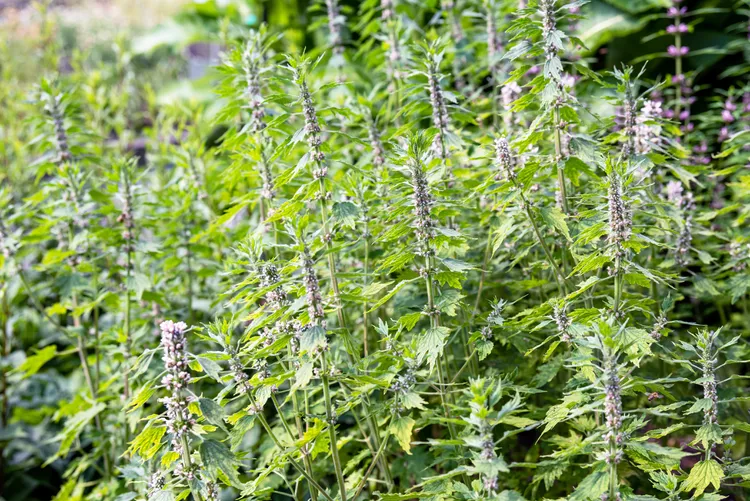
Description
A perennial herbaceous plant, motherwort belongs to the Lamiaceae family, which also includes mint. Like this potently scented plant, motherwort releases a distinct scent when crushed or bruised.
This plant has tiny, pink or purple blooms that open in the summer and severely serrated, ragged leaves. There are three lobes on the upper leaves and five lobes on the lower leaves. This plant has a distinctive tiered appearance since the highest leaves only have one lobe. This plant gives a landscape a distinctive appeal and serves to draw pollinators. Be aware that motherwort can become invasive and grows quickly.
Habitat
Motherwort is most likely indigenous to central Asia and southeast Europe, where it has been grown for millennia. Its natural habitat is found near highways, in waste grounds, abandoned farms, trash dumps, and other disturbed places.
Uses
For many years, motherwort has been utilized in folk medicine as a natural remedy. In addition to regulating your hormones, brain system, heart, and blood circulation, it offers relaxing and stress-relieving properties. Motherwort extract has been found to be high in terpenoids, flavonoids, and other phenolic acids.

Plant Care
- Light
Regardless of the amount of light it receives, motherwort usually develops healthily. Because of its special quality, motherwort is a good addition to parts of your garden or landscape that receive full sun or full shade.
- Soil
Additionally, motherwort can tolerate a broad range of soil types. Rich, well-draining soil that is moist will yield the best results for it. Its ideal pH range is between neutral and slightly alkaline.
- Water
Once established, this plant requires little watering and is thought to be drought-tolerant. To keep the soil moist, it’s crucial to maintain a regular watering schedule while the plant is young or following transplantation. Water the soil after that if it seems dry to the touch.
- Temperature and Humidity
Motherwort can tolerate a range of temperatures and humidity levels, much like it can for the majority of other growing situations. It can withstand a broad range of conditions and is known to grow practically anywhere in USDA hardiness zones 3 through 8.
- Fertilizer
Fertilizer is usually not needed for motherwort plants because of its naturally rapid growth habit and lack of sensitivity to soil conditions. This herbaceous perennial just needs its soil amended in the spring with compost or a well-balanced fertilizer.
Table





